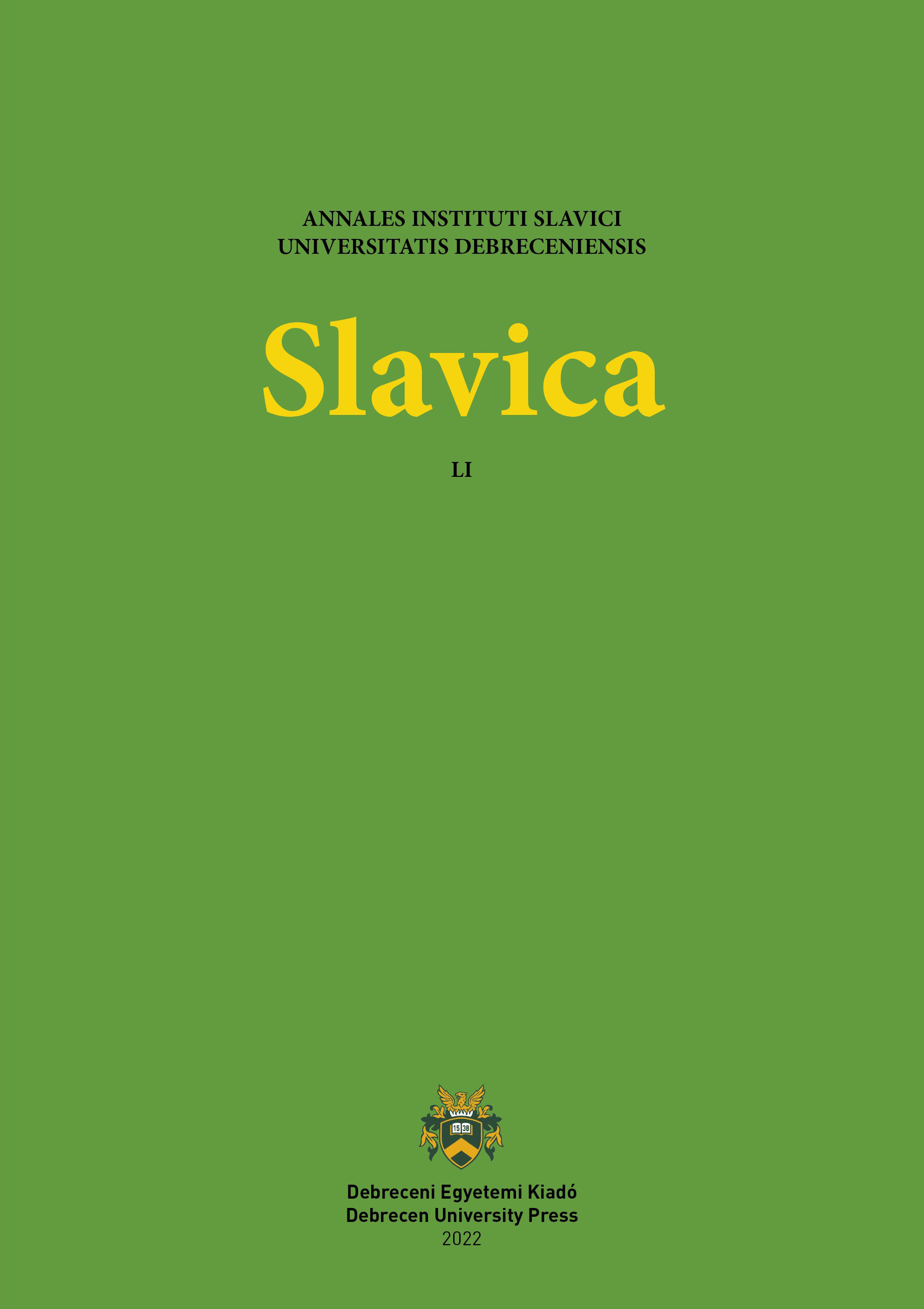Artefact Metaphors and Similes in Modern Russian Prose
Authors
View
Keywords
License
Copyright (c) 2022 Slavica

This work is licensed under a Creative Commons Attribution-NonCommercial 4.0 International License.
This is an open access article distributed under the terms of the Creative Commons Attribution License (CC BY-NC 4.0), which permits unrestricted use, distribution, and reproduction in any medium, provided the original author and source are credited.
How To Cite
Abstract
The article deals with comparative constructions (metaphors and similes) that include images of artefacts. The analysis involves the works of modern Russian prose writers such as A. Ilichevsky, E. Vodolazkin, O. Slavnikova, M. Shishkin, A. Volos, D. Bykov, D. Rubina, D. Glukhovsky, A. Makushinsky, S. Sokolov, V. Pelevin and others. It is concluded that modern Russian prose is characterized by the intensive use of artefact images as part of comparative constructions. The most common are metaphors and similes including the names of household items, fabrics, as well as machines, mechanisms, and their parts. These figurative means characterize, first of all, a person, parts of the human body, appearance, and people’s actions. Artefact comparative tropes giving a figurative description of various objects of nature are also widespread. Both traditional and new tropes including the names of artefacts in modern prose are discussed, in particular, the use of computer terms and names of new realities that have appeared relatively recently. A feature of modern prose texts is the regular use by writers of concretization and detailed transformation of images of comparison involving definitions of different types. Artefact metaphors and similes often act as key signs of the text and play a conceptualizing role in it.

 https://doi.org/10.31034/051.2022.07
https://doi.org/10.31034/051.2022.07